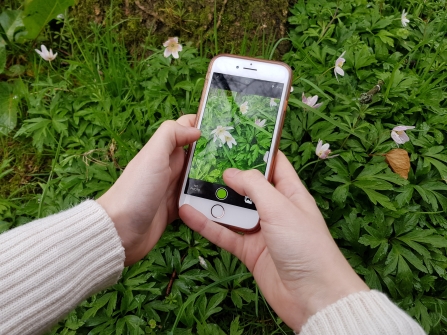This year Liverpool City Region, Lancashire and Greater Manchester all took part in the City Nature Challenge, making a record for local wildlife
Collectively across the three city regions we had
Ben Hall/2020VISION
This year Liverpool City Region, Lancashire and Greater Manchester all took part in the City Nature Challenge, making a record for local wildlife
Collectively across the three city regions we had
Let's take a closer look at how each individual city did...
Sand dunes at Freshfield by Euan Burns
Liverpool City Region had the highest number of observations made with an incredible 5,946 observations.

Water vole by Terry Whittaker/2020VISION
Lancashire had the highest number of different species recorded at 1,047. Excitingly Lancashire also had 253 records of 90 different species listed as Lancashire Key Species which include Lapwing, Brown Hare, Marsh Harrier, Corn Bunting, Yellow hammer, Water Vole, Toad, Kingfisher, Little Egret, Round-leaved Wintergreen, Woodcock, Pied Avocet, Otter, Royal Fern and Sea Holly.

Charlotte Varela
Greater Manchester had the most recorders with 224 people taking part.
Whilst the City Nature Challenge usually runs as a competition, participants this year were encouraged to embrace the collaborative aspect of sharing observations online with a digital community and record the wildlife closer to home. It really goes to show just how precious our gardens, balconies, local parks and green spaces are – not only to the wildlife living in them, but to our communities as a whole.
Fiona Whitfield, Senior Conservation Officer at The Wildlife Trust for Lancashire, Manchester and North Merseyside: “City Nature Challenge is a fantastic way to get more people interested in wildlife recording and citizen science as a whole. This is our second year taking part and we are excited to see more and more people taking part each year and hopefully it provides a great opportunity to learn something new or to start exploring more ways to support local wildlife.
Wildlife records are a really important resource to conservation organisations and charities like our own and help us build up a better picture of how a particular area or species are faring at a local level and how they might be responding to habitat losses or improvements, and climate change.”
Euan Burns, first time iNaturalist user said: “As someone who has never recorded wildlife, using iNaturalist added a different dimension to my walks or runs. It's a great way to just slow down and relax, but feel like you're achieving something at the same time. I'd say the main thing I learnt was that there are multiple varieties of plants such as honeysuckles or brambles which to someone like me is new information."
Whilst our nature reserves are very beautiful and important, our local green spaces, gardens and yards are often overlooked. What this year’s City Nature Challenge has demonstrated is that we really don’t need to go far to enjoy wildlife – it’s all around us.